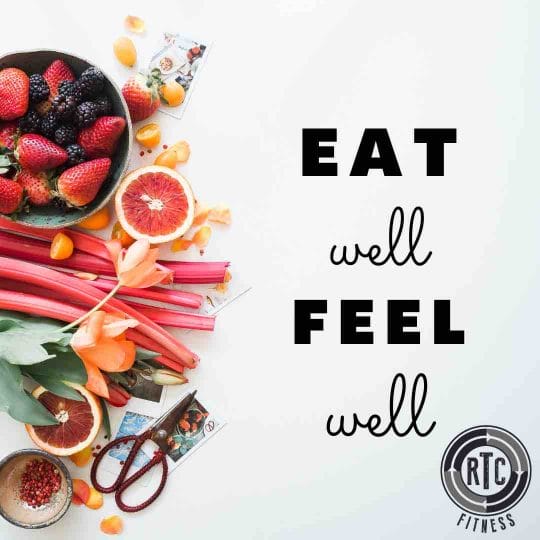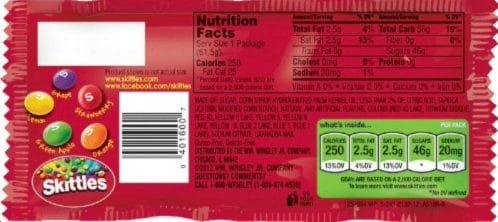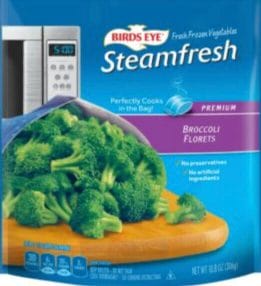What you NEED to Know

Note: the following message is a basic outline of how we have helped thousands of people lose weight, keep it off, and be the healthiest versions of themselves. This is not the only way. It’s just our path to helping!
——————-
We’re beginning the 2023, which means a fresh start for the New Year and that means it’s time to get the ball rolling with some weight loss for many of you!
But *how* do we get there? What do we do? How do we get the weight off, and then keep the weight off? How do we do this so we can make this a lifestyle, and not just some crash course, white-knuckle 30 day journey of being starving, angry, and miserable?
Breathe easy, my friends. By the end of this, you’ll have the tools to begin this journey with confidence.
For the majority of the population in America, weight loss is the goal. For that reason, weight loss/body fat reduction is going to be the focus of this path. Before we get into the how of weight loss, we need to understand the basic principles that we’re going to need to follow. These are not groundbreaking by nature, but they may come across as unreasonably simple.
To be honest, that’s the point. They ARE simple, but they ARE NOT easy to implement.
Marketing agencies, media, and supplement companies are very, VERY good in making us believe that losing weight is next to impossible without ‘insert miracle supplement here‘ or going on ‘insert fad diet here‘.
The truth is, losing weight is as easy (in theory) as increasing your energy expenditure (move more), and decreasing your caloric intake (eat less).
- You don’t need to worry about what food for your blood type or ancestry type.
- You don’t need to demonize certain foods or food groups.
- You don’t need to overly restrict yourself.
But what you do need to do is pay attention to how many calories you are eating… and that requires a bit of effort and habits.
In order to lose weight, you need to be in a sustainable calorie deficit.
Quick sidebar: It is important to recognize that different cultures, how you were raised, and socioeconomic levels can play a huge part in ease of adherence with these simple theories. The single Mom working 2 jobs is going to have a harder time than most finding a sustainable calorie deficit. Anyway. Just felt like I should put that out there. Onto our regularly scheduled slashing of your calories.
Your body needs fuel, obviously. If we don’t eat, we die, and dying isn’t exactly what we’re trying to do here.
Instead of going to the pump for some gasoline, we go to the kitchen for some grub. Our bodies then converts that food into energy through thermogenesis and a bunch of other fancy biological things that don’t really matter in the grand scheme of things (because we want to keep things simple).
But the following is something that we definitely need to know!
Your body has a basal metabolic rate. This is the rate of energy expenditure per unit of time by endothermic animals (us humans) while at rest. In not-so-sciency speak…you have a certain amount of calories that you need to eat in order to maintain the exact weight you are right now. Our bodies are constantly burning calories to sustain life…so we need to make sure we’re fueled at the appropriate levels.
There are many highly specific ways for us to find the basal metabolic rate (wayyyyy too much math if you ask me), but an easy way is this:
Multiply your bodyweight x 13 to 15. That’s your approximate basal metabolic rate, or BMR for short.
So a 200 pound person needs to eat ~2,800 calories a day to stay the same weight (I got that by multiplying 200 x 14).
A calorie deficit is any level of calories that are below your BMR… and this is the first thing you need to be trying to accomplish when trying to lose weight, because this truly is the most important part of the equation.
If you are not in a calorie deficit, you will not lose weight. Period. We need to find a sustainable calorie deficit that we can maintain from day to day in order to see success.
So, technically, you *could* starve yourself and lose a ton of weight… right? Absolutely! If that 200 pound person only eats 1,000 calories a day, they will lose weight.
But there’s a big problem with that…
As soon as they no longer restrict themselves to 1,000 calories a day, they’ll gain all of that weight back quickly…and probably a few extra pounds on top of that! Why? Because they’ve been absolutely miserable restricting so heavily that they will likely being overeating in excess. And the research proves it!
Nearly 65 percent of dieters return to their pre-dieting weight within three years, according to Gary Foster, Ph.D., clinical director of the Weight and Eating Disorders Program at the University of Pennsylvania. Only 5 percent of people who lose weight on a crash diet will keep the weight off.
That’s why we don’t do crash diets or short term plans. They’re unsustainable, and they lead us right back to where we started, or worse (we haven’t even touched on what they do to our relationship with food – but that’s for a later post!).
To find a sustainable calorie deficit, we can take the same sort of formula that we used to find the BMR.
For a sustainable calorie deficit for weight loss, multiply your current bodyweight x 10-12. So a 200 pound person’s sustainable calorie deficit would be 2,200 calories a day (I got that by multiplying 200×11).
What sounds better to you? Eating 500 calories a day, hash-tagging #DietLyfe, and being absolutely miserable, or eating a days worth of food at approximately ~200-400 less calories than you need to sustain? I’ll take the ladder any day of the week.
In order to accurately track the amount of calories you’re eating, you’re going to need a few things.
-A tracking app like MyFitnessPal, LoseIt, etc.
-A food scale that can weigh in ounces and grams
-Measuring cups
-An open mind and some patience
We use the tracking app to log what we’re eating each day. This is important because we need accurate data to truly understand the amount that we’re eating.
Don’t believe me? Go to your kitchen right now and properly weigh a serving of peanut butter. Don’t use a measuring cup. WEIGH IT. When you weigh it, you’ll realize that you’ve probably been eating 2 to 3 to 4 servings in one easy, delicious sitting instead of eating a smaller, prescribed amount.

We’ll get into the nuts and bolts on how to accurately weigh, measure, and track food in another post. For now, keep it simple by planning out the food you’re going to eat, and THEN weighing it so you know exactly how much you’re eating. MyFitnessPal and all of the other apps have tons of entries, but to make finding the food even easier, use the barcode scanner feature! It will automatically populate the nutrition label into your log!
Now, calories are king and are the most important aspect of weight loss, but we didn’t talk about what kind of calories.
Technically, that same person above could eat 2,200 calories of Snicker bars every day, and lose weight. Yes, it’s true. You could do that.
Problem…(I say that a lot, don’t I?)
That person will be miserable. They’ll be surviving off of nothing but dense carbs and fats that don’t have a ton of naturally occurring nutrients.
They’re going to be miserable and feel like a melted tub of Snickers.
For greater success and sustainability, eat more whole, nutrient dense foods.
Each meal should look like a “healthy” meal. Lean proteins. Vegetables. Some carbohydrates. A breakdown of 40% carbohydrates, 30% protein, and 30% fats is a great place to start with your macronutrients (we’ll also do another post about macros here soon). But for right now, focus on the plate method and don’t worry about the math.

The reason we prescribe eating whole, nutrient dense foods isn’t just because it’s what our bodies are wired to eat. It’s because you can be much more successful with your weight loss by keeping the volume of food larger. Whole foods = higher volume foods!
Have you ever seen those pictures comparing the calories between candy and broccoli? It’s pretty mind-blowing.
A normal bag of skittles contains 61.5 grams of candy, coming in at 250 calories. That’s just a normal bag of skittles that one could eat in about 10-15 minutes without even thinking about it (for the record, 1 bag of skittles will barely cover the bottom of a normal cereal bowl).

Now here’s the fun part….
Do you know how much broccoli it takes to make 250 calories?
Answer: 2 and a half bags of Steamfresh Broccoli Florets in order to get there.

One more time just to get the point across. TWO. BAGS. THEN ADD ANOTHER HALF BAG. Then you reach the amount of calories from a normal bag of skittles. Obviously this is a drastic comparison, but you get the point. Whole foods = WAY. MORE. VOLUME.
It’s unlikely that one would even get through the first bag of broccoli and think, “I definitely want some more broccoli.” It’s also unlikely that your stomach would want you to eat more than that.
It is, however, very likey that one would be full and wouldn’t need to eat anything else. You may want something else, but you wouldn’t need anything else (another topic we will cover in a later post).
Whole, nutrient dense foods are going to have a much larger volume. Because of that volume, they’re going to take up more space in your stomach making you feel more full and satisfied. The more full and satisfied you feel, the less likely you are to want to eat extra.
Now, am I saying Skittles are the devil? Nope. Not at all. You can ate that bag of Skittles…but you can also track the calories, and make sure you don’t go over your calorie allotment. That might mean that you have to have a smaller dinner, and that’s OK.
And while there’s a TON more that we could go into like eating lean proteins, the beautiful effects of staying properly hydrated, sleep, stress management…but for right now the magic is in the basics.
In a world full of snake oils, miracle drugs, and fad diets, we really only need to stick to the basics to find success with weight loss.
- We need to be in a calorie deficit.
- We need to sustain that calorie deficit.
- We need to eat whole, nutrient dense foods a majority of the time (keep the treats to a minimum, but still enjoy your life!).
We need to be patient with this journey and enjoy the ride.
That’s the basics, my friends, and the basics will help you get to where you want to be.
Until next time,
~Coach Allie
